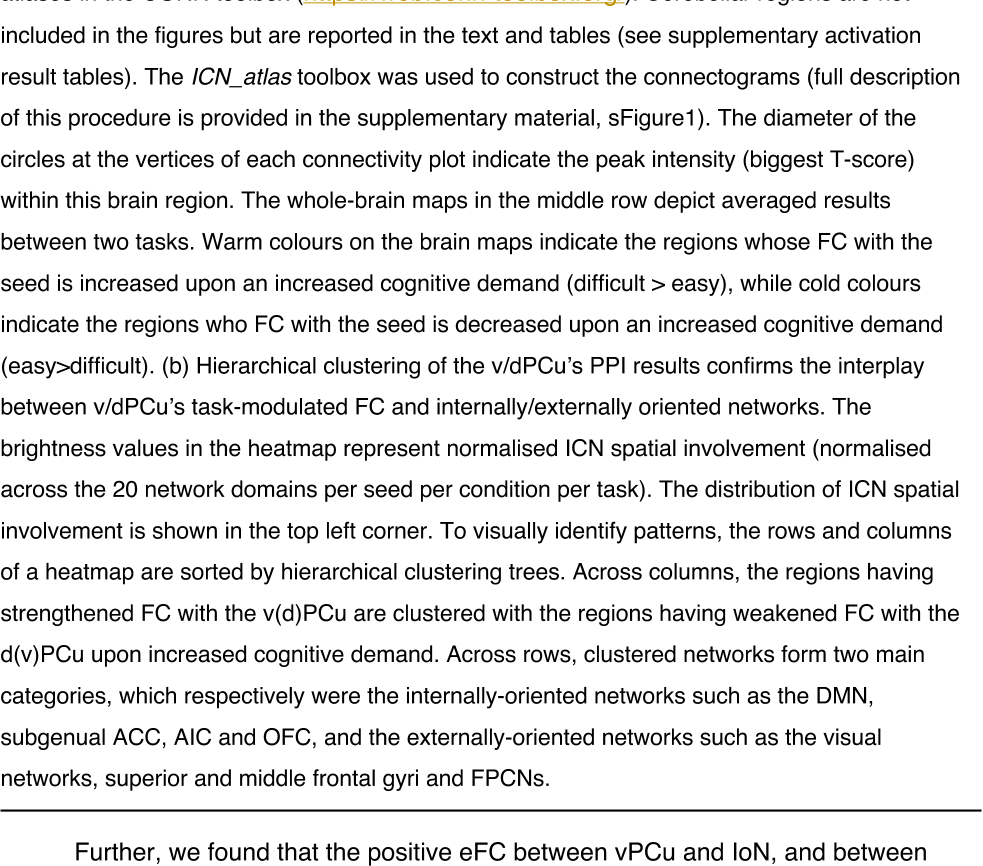




Did you find this useful? Give us your feedback














4 citations
1 citations
10,708 citations
...Among the DMN regions, the precuneus (PCu/PCC) has attracted significant interest due to its complex neuroanatomical, metabolic and functional fingerprint (de Pasquale et al., 2012; Raichle et al., 2001; Spreng et al., 2009; Utevsky et al., 2014)....
[...]
...It has exceptionally high metabolic rate (Raichle et al., 2001) and is suggested to have undergone the biggest brain morphological expansion through human evolution (Bruner & Iriki, 2016)....
[...]
7,741 citations
...A case in point is the interaction between the default mode network (DMN) and cognitive control networks which have been reported to be anti-correlated (Fox et al., 2005) and contraposed in their cognitive function (Weissman et al....
[...]
...A case in point is the interaction between the default mode network (DMN) and cognitive control networks which have been reported to be anti-correlated (Fox et al., 2005) and contraposed in their cognitive function (Weissman et al., 2006)....
[...]
6,049 citations
...The intrinsic coupling between regions in the human brain (or functional connectivity/FC) is not random but forms consistent spatial patterns known as Intrinsic (functional) Connectivity Networks (ICN) (Seeley et al., 2007)....
[...]
...INTRODUCTION The intrinsic coupling between regions in the human brain (or functional connectivity/FC) is not random but forms consistent spatial patterns known as Intrinsic (functional) Connectivity Networks (ICN) (Seeley et al., 2007)....
[...]
4,768 citations
...We used the Matlab-based “ICN_Atlas” toolbox to determine each significant cluster’s region/ICN correspondence by rating their spatial overlaps with the pre-defined regions/ICNs (Cole et al., 2014, 2016; Ito et al., 2017; Kozák et al., 2017; Laird et al., 2011, 2013; Smith et al., 2009)....
[...]
...…of using the ICN-BM atlas was the nomenclature used not only corresponds to the well-known canonical resting-state connectivity networks, but also to task-based co-activation networks which were generated from a meta-analyses using the BrainMap (BM) dataset (Cole et al., 2016; Smith et al., 2009)....
[...]
4,342 citations
...Evidence also comes from previous studies which have discussed the activation patterns of the DMN subregions, such as the mPFC (Bzdok et al., 2013; Kuzmanovic et al., 2018), the IPL (Igelström & Graziano, 2017), the PCC (Leech et al., 2011) and the PCu (Cavanna & Trimble, 2006)....
[...]
...This region (BA 31) lies in the borders between BA 7 (PCu) and BA 23 (PCC) and has been considered to be part of the PCu or PCC by different authors (Cavanna & Trimble, 2006)....
[...]
...It is engaged in a broad range of cognitive tasks, including both internal representation and externally-oriented, goal-directed tasks (Cavanna & Trimble, 2006; Fletcher et al., 1995) and its activity/connectivity can discriminate between conscious/unconscious states (Utevsky et al., 2014)....
[...]